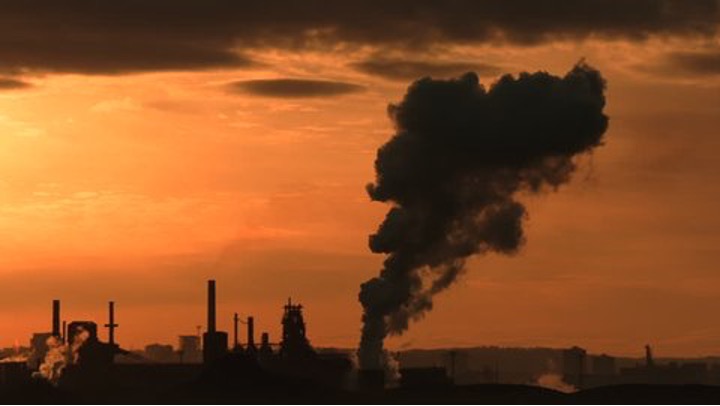Mark Harvey
The pandemic has stimulated many political leaders to benignly pronounce that ‘no nation is safe unless all nations are safe’, while notably pursuing national self-protection at the expense of international collaboration. The meagre achievements and funding of Covax illustrate how vaccination of the domestic nation has taken overriding priority, everywhere, as have the use of vaccines as instruments of national soft-diplomacy.
Climate change has become the climate emergency because, likewise, but with a far greater and more complex challenge, political institutions and, in particular, the institution of the sovereign nation state as underpinned by the United Nations, have failed to meet it adequately or rapidly enough. As we approach COP26, the political process of negotiation and deal-making appears to be stuck in the rut of institutions misfit-for-purpose, unable to challenge the rights of nations to exploit their resource environments, especially of fossil fuels and land. As a consequence, there is little prospect of addressing the inequalities within and between nations that are driving the generation of greenhouse gases.
No nation is safe unless all are safe
As political scientists have noted, climate change poses ‘the wickedest of problems’ of creating a planetary common good in the face of the pursuit of national self-interest, notably for economic growth and development (Coen, et al. 2020). No nation is safe unless all are safe, but the huge inequalities between and within nations for generating climate change pit national economic self-interest against environmental common interest.
Climate change also requires a change in optic for the social sciences. We now need to consider how different societies, in different historical epochs, are instituted in the resource environments over which they have control. Much of the discipline of economics treats the economy as if it existed outside nature. There is a whole sociological literature on varieties of capitalism without any recognition of the importance of differences arising from nations’ control over environmental resources (oil, coal, land, etc). Aside from the changing cultures of food we eat, almost every social practice is now energised by electricity, gas or oil: cooking, washing, heating, moving, refrigerating, communicating, entertaining. Yet, these social practices have been treated as if they were abstracted from interactions with the resource environments on which they depend. Societies have to be re-planted in the resource environments within which they grow. We urgently need a concept of the sociogenesis of climate change to complement the natural science concept of anthropogenesis (Harvey, 2021).
Climate Inequalities, present and historical
Social scientific accounts of climate change demonstrate that wealth inequalities between and within nations are dynamically related to the unequal generation of climate changing greenhouse gases, whether from industry or agriculture, or indeed, their combination. Economic inequalities, too simplistically caricatured as between developed and developing countries, are widely recognised as having impeded international agreement under UN auspices.
There is a second dimension of inequality, equally important to the climate emergency challenge, namely the unequal distribution between nations of environmental resources – coal, oil, fertile land, water, sun, minerals, etc. Nations control and interact with different resource environments, especially within their own national territories, or through colonisation or trading power.
In September 2021, scientists revised their estimation of how much of existing economically viable fossil energy reserves must remain unextracted if goals on reducing global warming are to be met: 58% of oil, 59% of fossil methane gas, and 89% of coal (Welsby et al., 2021). As natural scientists they could not be expected to say how this is to be achieved, politically, economically and socially. And nor did they. But this presents perhaps the most fundamental challenge to what has been the dominant paradigm of economic growth for all countries for the past century or more: the sovereign right of a nation to exploit its own territorial environmental resources.
… unextractable reserves are unequally distributed between nations
These unextractable reserves are unequally distributed between nations, as a source of wealth, but now also recognised as a source of imperilment of the planet. Above all, it is therefore a challenge to the political institutions, international and national as established since the Second World War. The United Nations enshrines this principle of national sovereignty, and no nation appears ready to relinquish its determining rights over national territorial resources. And that is by no means the end of it. What applies to fossil energy also applies to land and water resources. The rain forests of Amazonia, Indonesia, or Africa have to be preserved from further deforestation and agricultural extensification to meet the 1.5C target. That is equally a challenge to national sovereign rights.
This second dimension of inequalities is intimately connected with the first, characterising different historical trajectories of growth. Societies differ dramatically in how they generate climate change as a consequence of differences between their exploitation of resource environments. So, quite apart from the challenge to the political institution of the nation state, the climate emergency is also a challenge to social scientific understanding.
Historical pathways to climate change
Before turning to an analysis of international and national institutional ‘misfit-for-purpose’, a brief cameo to demonstrate the dynamic connection between inequalities of wealth, environmental resource inequalities, and climate change. Reviewing the histories that condition the present requires a different optic. The ‘great divergence’ that resulted in an historically novel level of wealth inequalities between nations was spearheaded by the United Kingdom’s industrial revolution. And it was that process of unequal wealth creation that also marked the rapid acceleration of climate change. The UK led the world in the shift to burning its coal for energy, first for domestic heating then for industrialisation, of which the steam powered textile factories were iconic exemplars. By the mid-19th century the UK was burning three times more coal than Germany, Belgium and France combined, which still relied on wood, charcoal and peat.
Britain’s industrialisation depended substantially on the colonisation of the New World
Although much emphasis has been placed on coal-burning Britain, its industrialisation depended substantially on the colonisation of the New World, first with its own slave plantation economies producing sugar as an increasingly important source of calories for the industrial proletariat, and then, above all for the cotton supplying the textile industry. The UK commanded the expansion of slavery into the Deep South of North America, from the late eighteenth century through to the Civil War. Through its mercantile and financial capital, by mid-nineteenth century UK textiles captured 70% of the US slave cotton crop, which supplied 88% of all cotton textiles produced in the UK. The UK economy was more dependent on the three million enslaved in the US after emancipating its own enslaved than it ever had been from its own Caribbean plantations. Industrialisation in the metropolis thus combined with land conversion and extensification in the New World, both climate changing forcers.
Indeed, the expansion of territorial control through settler colonisation and slave plantations in the United States gives the American historical climate changing trajectory its distinctive character. Cosmologists have argued that, from 3000 BC, the spread of agriculturalism through hybridisation of crops and livestock, deforestation and ploughing up land, was a slow burning climate changing phenomenon over centuries prior to industrialisation. That same process in the US was accelerated over a matter of decades, with the genocides and ethnic cleansing of subsistence agriculture and hunter-gatherer Native Americans. It was primarily a crime against humanity, but also a climate changing appropriation and conversion of environmental land resources on a continental scale.
Commercial capitalist agriculture of plantations and cattle ranching swept across the continent, celebrated in the Western film genre. This was the formation of a distinctive meat-eating culture: Texas, a slave state, fed its cattle into Chicago, to be then transported as beef in chilled railway carriages (iron and steam), to East Coast cities and the world. Chicago boasted to be the ‘bovine capital of the world’, and today the US eats more meat per capita than any country in the world.
Although here is not the place for detail, the next two major waves of climate changing economic development, the electrification of societies and the motorisation of spatial mobility, were equally marked by major societal differences. The development of electricity grids and motorways were conditioned by available national spatial and environmental resources. As Green New Deals are now much discussed, exemplary in this respect is the Tennessee Valley Authority, the totemic project of New Deal. Initially, if unintentionally, it was characterised by the massive dam systems of ‘green’ hydropower. But this was rapidly overtaken by the exploitation of its proximate environmental resource of the Appalachian coal fields. By the mid-1970s the Philadelphia Power Company was using five times more energy from coal than from hydro-power, and became the largest coal consumer in the world. Successive waves of accelerated climate change were driven by such interactions between societies and their resource environments, at the core of the concept of sociogenesis (Harvey, 2021).
These historical glimpses show how the great divergence in wealth inequalities between nations and the exploitation of resource environments have been responsible for successive waves of acceleration in the societal dynamics of climate change. As a consequence, the close linear relationship between per capita Gross National Product and climate change is hardly surprising. As the wealthiest society in the world, the US stands almost in a league of its own.
As a consequence of near energy self-sufficiency, the luxury of space, and strategic investments in the Interstate Highway system, the average American consumes between 4 and 5 times more petrol than the average European. The average weight of an American car is 30% higher than a German one, and a massive 55% more than a Japanese one. As an indicator of electricity consumption, the size of US refrigerators is on average double that of Japanese or European ones, and 90% of American households have air-conditioning units, as against 10% in Europe, or 60% in China.
… the richest within the richest countries are the primary forcers of climate change
Not all societies, or those within societies, are equally electrified. So, the richest within the richest countries are the primary forcers of climate change. The top 10% income group in the US produce 24 tonnes of CO2 equivalent per capita per year, compared with 14 and 13 tonnes by the top 10% in Germany and France respectively. The threshold of purchasing power for the top 10% in England is $71,000 compared with $155,105 in the USA, and purchasing power translates into the command over environmental resources generating climate change. The majority of the world’s population produce less greenhouse gases per capita than is required to meet the 1.5C global warming target (Oxfam, 2021).
International and national political institutions: misfit for purpose
These are just some of the stark statistics of the links between unequal wealth creation and greenhouse gas generation, linking production with consumption. That climate change has become a climate emergency is in significant part a consequence of the misfit between international and national political institutions and these dynamics of climate change. The United Nations was born out of the world-shattering shocks of two world wars, designed in significant part to preserve peace between sovereign nations and promote de-colonisation. So constructed, it enshrines the principle of national territorial sovereignty.
It was never designed, even with Millennium Development Goals, to confront the sovereign rights of nations to generate wealth in their own national self-interest, exploiting their own national territorial resources. Where there are international ‘common goods’, such as the regulation of international waters under the Law of the Sea Convention (1982), it at the same time confirmed national sovereignty over territorial waters. Cod wars are now followed, post-Brexit, with migrant wars.
One case of the UN establishing some supra-national authority, the Responsibility to Protect (2005) when a nation threatened a part of its population with genocide or ethnic cleansing, has been exposed for its limitations, whether in Rwanda or Myanmar. These examples of the limitations of United Nations powers to override national sovereignty, for all their complex political reasons and internal institutional obstacles, only serve to highlight how the United Nations is misfit for purpose when it comes to climate change.
Three major phases of the United Nations Framework Convention on Climate Change confirm this misfit: the Kyoto Protocol (1997), the Copenhagen Accord (2009) and the Paris Agreement (2015). The Kyoto Protocol, following success in dealing with the ozone layer, adopted a ‘top-down’ approach of legally mandatory carbon reduction targets, with provisions for enforcement. However, enforcement was never credible. States like Canada pulled out when not meeting their target, major countries (China, India, Brazil) were excluded – and finally the United States refused to ratify. Copenhagen proved to be more discord than Accord, and already marked a retreat from supra-national global mandates. So this governance model was abandoned for a ‘bottom-up’ approach, in which each sovereign nation state independently set its own commitments, subject to monitoring and review. As a reflection of national sovereignty, these commitments were called Nationally Determined Contributions (NDCs).
… there is no global solution achieved by the sum of all national solutions
The Paris Agreement established these NDCs under international treaty, signed by 179 countries. It has been heralded as ‘the most important treaty to be reached by the global community’ in relation to climate change (Held, 2018). Undoubtedly, it was a step forward from the preceding failures, but, given the continuing rise of global GHG emissions from almost every country in the world, its promise now rings hollow. And that was before Trump and Bolsonaro had pulled out. In particular, by conforming and reinforcing the principles of national sovereignty, it directly obstructs any attempt to significantly address the inequalities of responsibilities for climate change between countries noted above. It is every nation addressing its own problem, where there is no global solution achieved by the sum of all national solutions.
The Agreement has signally failed to raise anything approaching significant financial flows to support green transitions of developing countries, to even begin to modify wealth inequalities and command over resources. By only treating nations as producers of GHG, it evades entirely the interdependencies of trade between countries arising from inequalities of environmental resources, whether for food or energy. So, Japan’s increasing reliance on Australian coal for energy, or Europe and China’s dependence on Brazil for soyabeans for animal feed, or the US importing Chinese manufactures, escape its remit. One nation’s production side is disconnected from another nation’s consumption side. And the World Trade Organisation resists all attempts to regulate international trade for environmental sustainability. And finally, there is no supranational legally binding process of enforcement (Bodansky, et al. 2017). The Paris Agreement is indeed the product of Nations United by their independent sovereign nationhood.
At the national level, the alternative prospects of Green New Deals are still largely bounded by every-nation-for-themselves politics, and, so far, however laudable, they are political projects confined to the wealthiest countries. Most ravaged by world wars, the European Green New Deal stands out as the only global example of transnational policy. But it too is confined to a limited set of wealthy, advanced economies, failing to address the inequalities across the nations of the world. Moreover, with Nord Stream 2 and new coal-fired power stations in Germany, and increasing European reliance on energy from Russia and Kazakhstan, Europe is continuing to travel in the wrong direction. Neither Poland nor Russia appears remotely committed to reducing their extraction of fossil fuels, as required to meet 1.5C.
Questions
If it took the shock of two world wars to lead to the establishment of the United Nations, how extreme and how many climate change shocks will it take to induce a shift out of the paradigm of national sovereignty over the exploitation of the planet’s environmental resources?
And will it take a climate catastrophe to shake disciplinary boundedness and nation-parochialisms, and stimulate a reconfiguration of social science?
References
Bodansky, D., Brunnée, J. and Rajamani, L., 2017. International climate change law. Oxford University Press.
Coen, D., Kreienkamp, J. and Pegram, T., 2020. Global Climate Governance. Cambridge University Press.
Held, D. and Roger, C., 2018. Three models of global climate governance: From Kyoto to Paris and beyond. Global Policy, 9(4), pp.527-537.
Harvey, M. 2021. Climate Emergency. How societies create the crisis. Emerald. https://books.emeraldinsight.com/page/detail/Climate-Emergency/?k=9781800433335
Oxfam, 2021 Confronting Carbon Inequality. https://oxfamilibrary.openrepository.com/bitstream/handle/10546/621052/mb-confronting-carbon-inequality-210920-en.pdf
Welsby, D., Price, J., Pye, S. and Ekins, P., 2021. Unextractable fossil fuels in a 1.5° C world. Nature, 597(7875), pp.230-234. https://www.nature.com/articles/s41586-021-03821-8

Mark Harvey is emeritus professor in the Sociology Department at the University of Essex. He joined the department in September 2007, following a decade at the ESRC Centre for Research in Innovation and Competition (CRIC) at the University of Manchester, as a Senior Research Fellow and Professorial Research Fellow.
Header Image Credit: Shutterstock
HOW TO CITE THIS ARTICLE:
Harvey, Mark 2021. ‘Climate emergency: international and national political institutions misfit-for-purpose’ Discover Society: New Series 1 (3): https://doi.org/10.51428/dsoc.2021.03.0005




